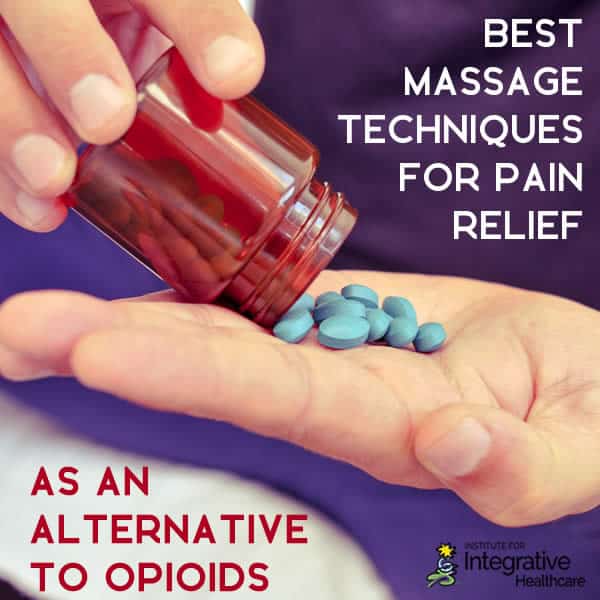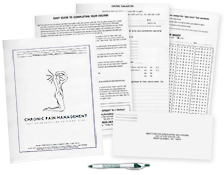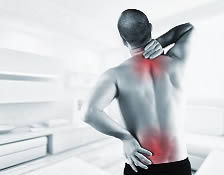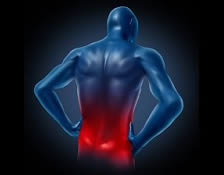

The topic of the opioid epidemic necessitates an in-depth conversation integrating societal, political, medical, and philosophical viewpoints. Although, the purpose of this post is not to examine the complexities of the system that led to the opioid epidemic, but rather to outline one specific alternative to opioid pain medication: massage therapy.
In this article, we will:
- Briefly review pain science.
- Break down the process of how massage can relieve pain.
- Outline the specific, research-based massage techniques that can best address pain.
What is Pain?
There have been numerous theories put forth on pain over the years. (1) While each of these theories have led us closer to an exact pain pathway, we continue to be stymied by the fact that pain is, above all else, subjective. (2) Everyone will experience a pain stimulus slightly differently than their neighbor.
However, advances in neuroscience have gotten us closer to an objective pain pathway. These advances have led to a deeper understanding of pain and, by extension, pain relief. (3)
As our understanding grew of how to treat pain, we became aware of the ease of relieving pain with medication, such as opioids.
The problem is that, when it comes to opioid use, the underlying issue that is causing the pain in the first place isn’t addressed, but rather just the symptoms. (4) Therefore, the patient becomes reliant on the pain medication. This is, in part, what led to the opioid epidemic. Patients were prescribed opioids for all painful conditions, and then the addictive properties and the lack of a cure for the underlying mechanism of the pain led to the crisis we now face. (5)
As the opioid epidemic persists, we now have begun looking to “alternative therapies” for pain relief, such as:
- exercise,
- dietary changes,
- and massage therapy. (6)
How Does Massage Relieve Pain?
While massage therapy has been utilized for centuries to treat a variety of conditions, there still remains some question as to how exactly massage is involved in the pain pathway. (7)
However, there are well documented correlations between massage therapy and its effect on many different issues such as anxiety (8), muscle tightness/spasms (9), and improved circulation (10).
Let’s examine each of these issues that are addressed with massage and see how they relate to pain reduction.
3 Issues Addressed with Massage
1. Anxiety Relief Through Massage

Although some studies have found that massage is no more effective than other alternative treatments such as relaxing room therapy (RRT) or thermotherapy in treatment of generalized anxiety disorder (11), others have found massage therapy to be effective in the treatment of painful conditions that are associated with anxiety (12). Because of the correlation between pain and anxiety, there is a logical connection between massage and pain relief in the anxious, chronic pain patient (13).
2. Muscle Spasm/Tightness Relieved Through Massage
An additional outcome of massage therapy is the relief of muscle spasms and tightness. Relief of these symptoms leads to other beneficial effects as well, such as improved sports performance and increased range of motion within affected joints (9). The general profile of the chronic pain patient who requires opioid medication, includes tight muscles and a protected posture. In fact, studies have looked at posture correction in the chronic pain patient, and have found that postural corrections result in decreased pain (14). Therefore, it is reasonable to assume that relief of muscle tightness resulting in improved posture in these patients should lead to reports of pain relief.
3. Improved Circulation Through Massage
Another documented effect of massage therapy is improved blood flow and circulation (10). Through cardiovascular research, we know that improved blood flow leads to improved ability for healing elements such as platelets, oxygen, and white blood cells to reach their targets (15). Therefore, it again stands to reason that the improvements we see in circulation through massage therapy could also lead to pain relief.
As was stated earlier, the exact, direct effect of massage on the pain pathway is yet to be understood or defined. Though, we can see numerous indirect correlations with other well documented effects of massage which we can then, in turn, relate to pain relief from massage therapy.
This all now begs the question of: “What are the best massage techniques to reduce pain as an alternative to opioids?”
Alternative to Opioids: The Best Massage Techniques
The best massage technique is going to vary for each patient. This is why a thorough evaluation and an establishment of patient preferences is an essential skill of all those who utilize massage techniques in their practice. Depending on the patient, the most appropriate massage technique may be effleurage or friction massage.
- Effleurage: For certain regions of the body and for certain types of patients, effleurage may be the best technique. An example patient who is seeking massage as an alternative to opioids for low back pain and demonstrates a high level of stress, may do best with a lighter effleurage massage, as their pain tolerance is likely quite low and the massage may have a relaxing effect on them (8, 16). On the other hand, a patient who has not taken opioids and is seeking massage before trialing any medication may not see as much benefit from effleurage, as their symptoms and sensation may permit a deeper massage to stimulate tissue healing.
- Friction Massage: A deeper pressure massage aimed at relieving tension in muscles may be an appropriate treatment for pain in certain patients, in certain body regions (9). For example: a patient with shoulder pain due to tightness in the latissimus dorsi muscle, may benefit from a deeper pressure massage to relieve the tightness. This relief of tightness should, in turn, lead to improved range of motion/movement in the shoulder and as a result: less shoulder pain.
Final Thoughts
Even though specific research is lacking, massage is an appropriate treatment to trial as an alternative to opioids, as it is safe and relatively risk-free. A comprehensive evaluation should be performed on the patient seeking massage treatment, and the evaluation should guide the massage therapist in selecting and implementing the most effective form of massage.














